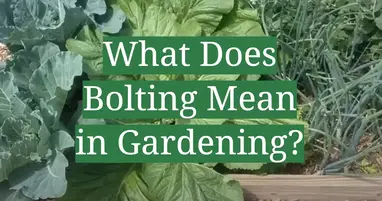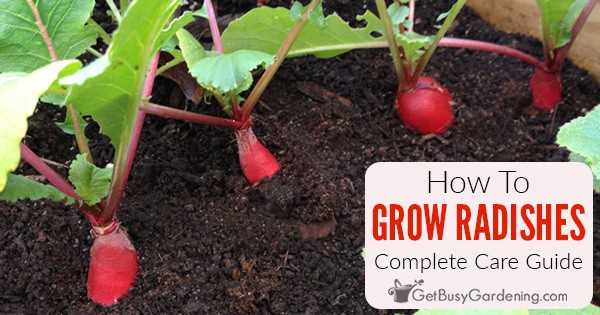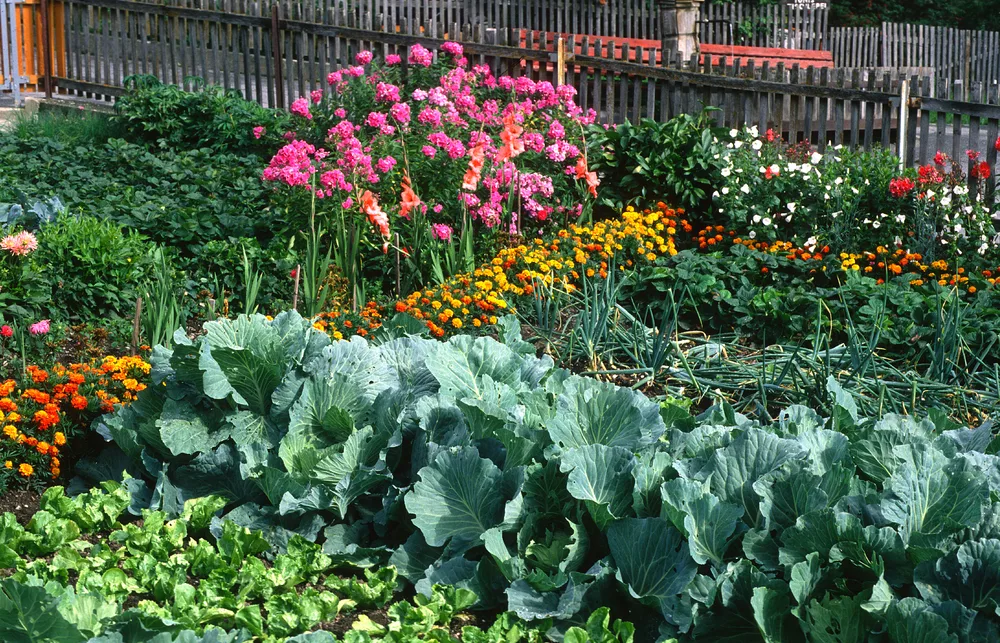- Choosing the Right Cabbage Varieties for Seedlings
- 1. Green Cabbage
- 2. Red Cabbage
- 3. Savoy Cabbage
- 4. Napa Cabbage
- 5. Baby Cabbage
- Preparing the Seed Starting Mix for Cabbage Seedlings
- Sowing Cabbage Seeds at the Perfect Depth
- Providing Optimal Lighting for Cabbage Seedlings
- 1. Natural Light:
- 2. Supplemental Lighting:
- 3. Light Duration:
- 4. Light Intensity:
- 5. Light Distribution:
- Maintaining Proper Temperature and Humidity Levels
- Temperature
- Humidity
- Watering Techniques for Healthy Cabbage Seedlings
- 1. Water consistently
- 2. Water deeply
- 3. Water in the morning
- 4. Avoid watering the leaves
- 5. Use a watering can or drip irrigation
- 6. Mulch around the seedlings
- Transplanting Cabbage Seedlings into the Garden
- “Question-Answer”
- What are some tips for growing healthy cabbage seedlings?
- How can I ensure that my cabbage seedlings receive enough moisture?
- What is the ideal temperature for growing cabbage seedlings?
- Should I use artificial lighting to grow cabbage seedlings?
- Is it necessary to fertilize cabbage seedlings?
- “Video” Secrets of CABBAGE FARMING and what to look out for
Growing cabbage seedlings can be a rewarding and fruitful experience, but it requires careful attention and knowledge of some insider tips. In this article, we will share with you expert advice to help you grow robust and healthy cabbage seedlings.
First and foremost, it is crucial to choose the right seeds for your cabbage seedlings. Look for high-quality seeds from reputable suppliers. Make sure the seeds are fresh and have a high germination rate. Consider the specific variety of cabbage you want to grow and check if it is suitable for your climate and growing conditions.
Once you have the right seeds, it is essential to provide them with optimal growing conditions. Cabbage seedlings thrive in well-draining soil with a pH level between 6.0 and 6.8. Prepare the soil by adding organic matter, such as compost or well-rotted manure, to improve its fertility and moisture-retaining capacity.
Another insider tip is to start your cabbage seedlings indoors before transplanting them into the garden. This allows you to control the growing conditions and give the seedlings a head start. Use seed trays or pots filled with sterile seed-starting mix. Plant the seeds at the appropriate depth, usually around ¼ to ½ inch, and keep the soil consistently moist but not waterlogged.
During the germination and seedling stage, provide your cabbage seedlings with adequate light. Place them in a location with bright, indirect sunlight or use artificial grow lights if necessary. Keep the temperature around 70°F during the day and slightly cooler at night. Proper air circulation is also important to prevent fungal diseases, so avoid overcrowding the seedlings.
As the cabbage seedlings grow, it is important to gradually acclimate them to outdoor conditions before transplanting them into the garden. This process, known as hardening-off, involves exposing the seedlings to increasing amounts of sunlight and outdoor temperatures over a period of several days. Start with a few hours of sunlight and gradually increase the exposure over a week.
By following these expert tips, you can ensure the successful growth of your cabbage seedlings. Remember to monitor their progress, provide regular watering, and protect them from pests and diseases. With the right care and attention, you will be rewarded with strong and vigorous cabbage plants that will provide you with a bountiful harvest.
Choosing the Right Cabbage Varieties for Seedlings
When it comes to growing cabbage seedlings, choosing the right variety is crucial for success. Here are some popular cabbage varieties that are known for producing robust and healthy seedlings:
1. Green Cabbage
Green cabbage is the most common type of cabbage and is known for its round and compact heads. It is a hardy variety that is easy to grow and has a mild, sweet flavor.
2. Red Cabbage
Red cabbage is a colorful and nutritious variety that is packed with antioxidants. It has a slightly spicier flavor compared to green cabbage and is great for adding color to salads and other dishes.
3. Savoy Cabbage

Savoy cabbage has crinkly, dark green leaves and a milder, sweeter flavor. It is a popular choice for stuffing and is often used in traditional European dishes.
4. Napa Cabbage
Napa cabbage, also known as Chinese cabbage, has long, cylindrical shaped heads and a mild, slightly sweet flavor. It is often used in Asian cuisine, particularly in stir-fries and kimchi.
5. Baby Cabbage
Baby cabbage is a miniature variety that is harvested at a young age, often when the heads are only a few inches in diameter. It has a tender and sweet flavor and is perfect for single servings or small dishes.
When choosing the right cabbage variety for seedlings, consider factors such as your climate, growing conditions, and personal preferences. Additionally, you may also want to research specific varieties that are resistant to common pests and diseases in your area.
Overall, selecting the right cabbage variety will help ensure that your seedlings thrive and produce healthy and delicious heads of cabbage.
Preparing the Seed Starting Mix for Cabbage Seedlings
Before starting your cabbage seedlings, it’s crucial to prepare the right seed starting mix. This will provide the optimum growing conditions for your seeds and encourage robust growth.
Materials needed:
- Peat moss
- Perlite
- Vermiculite
- Well-aged compost
- Container or bucket for mixing
- Measuring cups or spoons
Instructions:
- Start by measuring out the materials. For a basic seed starting mix, use equal parts of peat moss, perlite, and vermiculite. If you prefer a nutrient-rich mix, you can add a smaller amount of well-aged compost.
- In a container or bucket, combine the measured amounts of peat moss, perlite, vermiculite, and compost. Use a trowel or your hands to mix them thoroughly.
- Make sure all the ingredients are well incorporated and distributed evenly throughout the mix. This will ensure that each cabbage seedling has access to the necessary nutrients, moisture, and oxygen.
- The resulting seed starting mix should be light, fluffy, and well-draining. It should retain moisture without becoming waterlogged, which can lead to damping-off disease.
- If desired, you can moisten the seed starting mix slightly before sowing your cabbage seeds. This will help the seeds make contact with moisture and facilitate germination.
- Fill your seed trays or pots with the prepared seed starting mix, leaving a small gap between the top of the mix and the rim of the container.
- Gently press the mix down to eliminate any air pockets and create a smooth surface for sowing your cabbage seeds.
- Once the seed starting mix is prepared and in the containers, you are ready to sow your cabbage seeds and begin the seedling growth process!
By following these steps and using a well-prepared seed starting mix, you can give your cabbage seedlings the best possible start on their journey to becoming healthy, robust plants.
Sowing Cabbage Seeds at the Perfect Depth
Sowing cabbage seeds at the right depth is crucial for successful germination and healthy seedling growth. When sowing cabbage seeds, it’s important to follow these insider tips to achieve the perfect depth:
- Prepare the soil: Before sowing cabbage seeds, prepare the soil by removing any weeds, rocks, or debris. Break up the soil and ensure it is loose and well-draining.
- Choose the right time: Cabbage seeds are best sown in early spring, about 6-8 weeks before the last expected frost. This will give the cabbage plants enough time to grow and mature before the hot summer temperatures arrive.
- Mark the rows: Use a garden marker or string to mark the rows where you will be sowing the cabbage seeds. This will ensure proper spacing and organization.
- Sow the seeds: Carefully sow the cabbage seeds into the prepared soil, following the recommended spacing for your cabbage variety. It’s important to sow the seeds at the correct depth to ensure proper germination.
- The ideal depth: Cabbage seeds should be sown at a depth of approximately ¼ to ½ inch (0.6 to 1.3 cm). This depth allows the seeds to establish good contact with the soil while still receiving enough light for germination.
- Cover the seeds: Gently cover the cabbage seeds with soil, ensuring they are evenly distributed and not clumped together. Lightly pat down the soil to secure the seeds in place.
- Water thoroughly: After sowing the cabbage seeds, water the soil thoroughly to ensure good moisture penetration. This will promote germination and seedling growth.
- Provide proper care: Once the cabbage seedlings emerge, it’s important to provide them with proper care, including regular watering, adequate sunlight, and protection from pests and diseases.
By following these tips and sowing cabbage seeds at the perfect depth, you’ll set your seedlings up for success and ensure robust growth throughout the season.
Providing Optimal Lighting for Cabbage Seedlings
Lighting is a crucial factor in the successful growth of cabbage seedlings. Proper lighting helps them develop strong stems, healthy leaves, and overall robust growth. Here are some expert tips to provide optimal lighting for your cabbage seedlings:
1. Natural Light:

Placing your cabbage seedlings in a location that receives ample natural light is ideal. Choose a spot near a sunny window or in a greenhouse with plenty of direct sunlight. Cabbage seedlings typically require at least 6-8 hours of sunlight per day.
2. Supplemental Lighting:
If natural light is insufficient or not available, you can use supplemental lighting to provide the necessary light spectrum for cabbage seedling growth. LED grow lights are a popular choice due to their energy efficiency and the ability to provide the right light spectrum for plant photosynthesis. Place the grow lights about 6-12 inches above the seedlings and adjust the height as they grow.
3. Light Duration:
Provide cabbage seedlings with 14-16 hours of light per day. You can use a timer to automate the lighting schedule and ensure consistent and uninterrupted light exposure. Avoid leaving the lights on 24/7 as cabbage seedlings also need a period of darkness for proper growth and development.
4. Light Intensity:
The intensity of light is important for the healthy growth of cabbage seedlings. Ensure that the light source is not too close or too far from the seedlings. Adjust the light height or intensity depending on the growth stage of the cabbage seedlings. Be cautious not to expose them to intense light immediately, as it can cause stress and sunburn.
5. Light Distribution:
Ensure that the light is evenly distributed among all the cabbage seedlings. Avoid overcrowding or shading of seedlings, as it can lead to weak and leggy growth. If using multiple light sources, arrange them to cover the entire seedling tray or growing area evenly.
By following these tips, you can provide optimal lighting conditions for your cabbage seedlings, ensuring their healthy growth and robust development.
Maintaining Proper Temperature and Humidity Levels
Proper temperature and humidity levels are crucial for the successful growth of cabbage seedlings. Here are some expert tips to help you maintain the right conditions:
Temperature
- Keep the temperature between 60°F (15°C) and 70°F (21°C) during the day. Cabbage seedlings thrive in cool temperatures.
- Avoid extreme temperature fluctuations, as it can stress the seedlings. Use a thermometer to monitor the temperature regularly.
- Use a heating mat or grow lights to provide consistent warmth if your growing environment is too cold.
- Avoid placing the seedlings near cold drafts or in direct sunlight, as this can cause temperature imbalances.
Humidity

- Maintain a humidity level of around 50-60% for cabbage seedlings. Proper humidity helps prevent drying out and promotes healthy growth.
- Use a hygrometer to measure the humidity levels in your growing area.
- If the humidity is too low, you can increase it by placing a tray of water near the seedlings or by using a humidifier.
- Avoid excessive humidity above 70%, as it can promote the growth of fungal diseases. Good airflow can help prevent this.
By carefully monitoring and adjusting the temperature and humidity levels, you can create an ideal environment for your cabbage seedlings to grow into strong and healthy plants.
Watering Techniques for Healthy Cabbage Seedlings

Proper watering is crucial for the development of healthy cabbage seedlings. Here are some watering techniques to ensure your seedlings get the right amount of water:
1. Water consistently
Consistency is key when it comes to watering cabbage seedlings. It is important to keep the soil consistently moist but not waterlogged. Check the soil moisture regularly and water accordingly.
2. Water deeply
When watering cabbage seedlings, make sure to water deeply. Shallow watering can lead to shallow root growth, making the plants more susceptible to drought stress. Water the plants until the soil is moist at least 6 inches deep.
3. Water in the morning
Watering cabbage seedlings in the morning is ideal as it allows the plants to dry out before evening. Moisture on the leaves during the night can encourage fungal diseases. Additionally, watering in the morning allows the plants to absorb the moisture and nutrients throughout the day.
4. Avoid watering the leaves

When watering cabbage seedlings, try to avoid getting the leaves wet. Wet leaves can promote the growth of diseases, such as damping-off or powdery mildew. Instead, focus on watering the soil around the plant base.
5. Use a watering can or drip irrigation
Using a watering can or drip irrigation system is more efficient and allows for better control of water distribution. These methods ensure that water is delivered directly to the base of the plants, avoiding unnecessary wetting of the leaves and reducing water wastage.
6. Mulch around the seedlings
Applying a layer of organic mulch around the cabbage seedlings helps to retain moisture in the soil, reducing the need for frequent watering. Mulch also helps to regulate soil temperature, suppress weed growth, and prevent soil erosion.
Remember, overwatering can be just as harmful as underwatering. It’s important to find the right balance and adjust watering frequency based on the specific needs of your cabbage seedlings.
Transplanting Cabbage Seedlings into the Garden
Transplanting cabbage seedlings into the garden is an important step to ensure the growth and success of your cabbage crop. Proper transplanting techniques will help the seedlings establish well and thrive in their new environment. Here are some insider tips to help you with the transplanting process:
- Choose the right timing: Transplant cabbage seedlings when they are 4-6 weeks old and have developed a strong root system. Avoid transplanting during periods of extreme heat or cold.
- Prepare the soil: Before transplanting, make sure the soil is well-drained, fertile, and weed-free. Add organic matter such as compost or well-rotted manure to improve soil quality.
- Water the seedlings: Water the cabbage seedlings thoroughly before transplanting to ensure they are well-hydrated. This will help minimize transplant shock.
- Dig the holes: Dig holes in the garden bed that are slightly larger than the root balls of the seedlings. Space the holes according to the recommended spacing for your cabbage variety.
- Transplant carefully: Gently remove the seedlings from their containers, being careful not to damage the roots. Place each seedling in a hole, making sure the top of the root ball is level with the soil surface.
- Firm the soil: Firm the soil around the seedlings gently to eliminate any air pockets. This will ensure good root-to-soil contact.
- Water immediately: After transplanting, water the seedlings thoroughly to settle the soil and help the roots establish in their new location. Provide regular watering throughout the growing season.
- Protect from pests: Use row covers or netting to protect young cabbage seedlings from pests like cabbage worms and flea beetles.
Following these tips will give your cabbage seedlings the best chance for success in the garden. With proper care and attention, you can enjoy a bountiful harvest of delicious and healthy cabbages.
“Question-Answer”
What are some tips for growing healthy cabbage seedlings?
Some tips for growing healthy cabbage seedlings include starting with quality seeds, providing adequate moisture and lighting, maintaining a consistent temperature, and fertilizing properly.
How can I ensure that my cabbage seedlings receive enough moisture?
To ensure that your cabbage seedlings receive enough moisture, you should water them regularly, ensuring that the soil is consistently moist but not waterlogged. Providing a tray under the seedlings can help retain moisture, and misting them with water can also help keep them hydrated.
What is the ideal temperature for growing cabbage seedlings?
The ideal temperature for growing cabbage seedlings is between 55 and 75 degrees Fahrenheit (13 to 24 degrees Celsius). It is important to maintain a consistent temperature in this range to ensure healthy growth.
Should I use artificial lighting to grow cabbage seedlings?
Yes, using artificial lighting can be beneficial for growing cabbage seedlings, especially if you are starting them indoors. Cabbage seedlings require around 14 to 16 hours of light per day, and using grow lights can help provide the necessary light intensity and duration.
Is it necessary to fertilize cabbage seedlings?
Yes, it is necessary to fertilize cabbage seedlings to ensure they have the nutrients they need for healthy growth. It is recommended to use a balanced fertilizer with a ratio of nitrogen, phosphorus, and potassium, and to follow the instructions on the fertilizer packaging for proper application.







